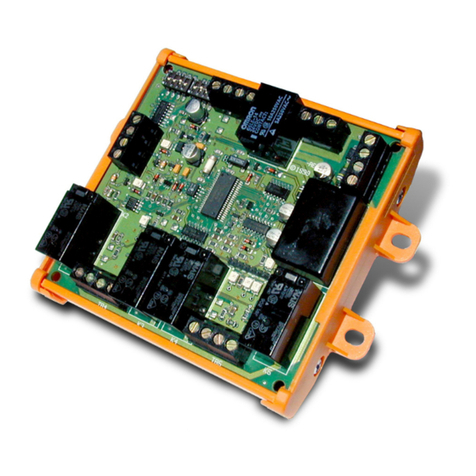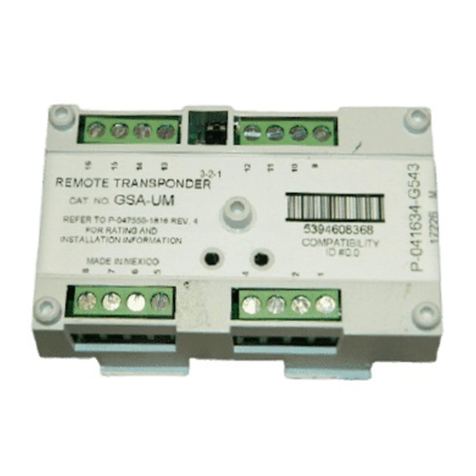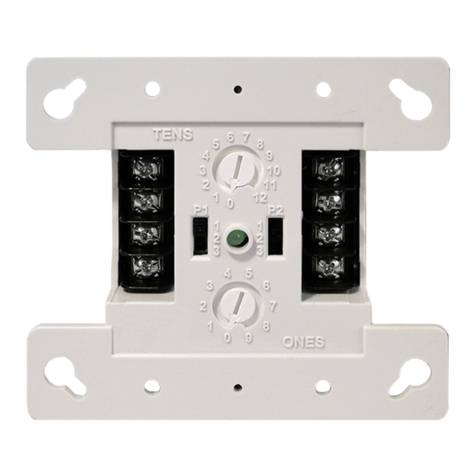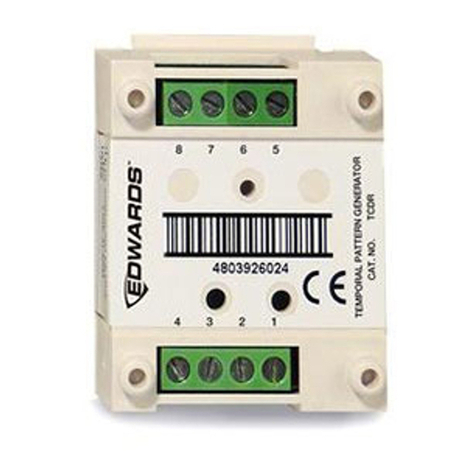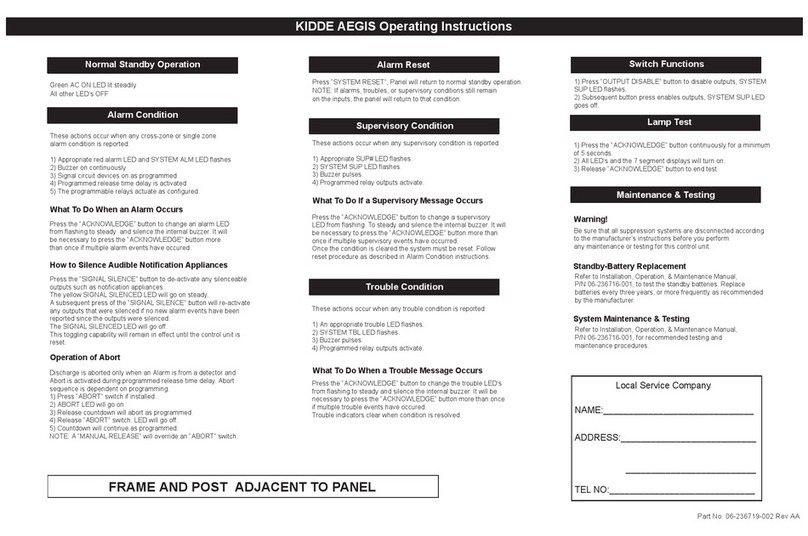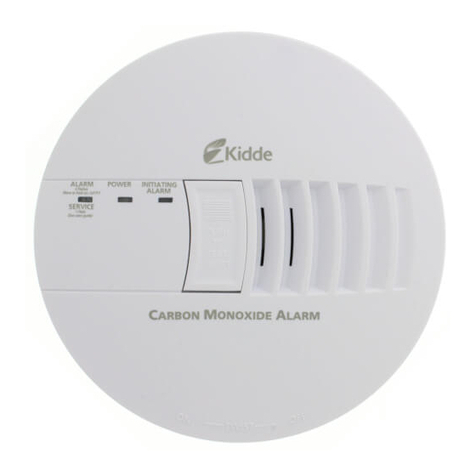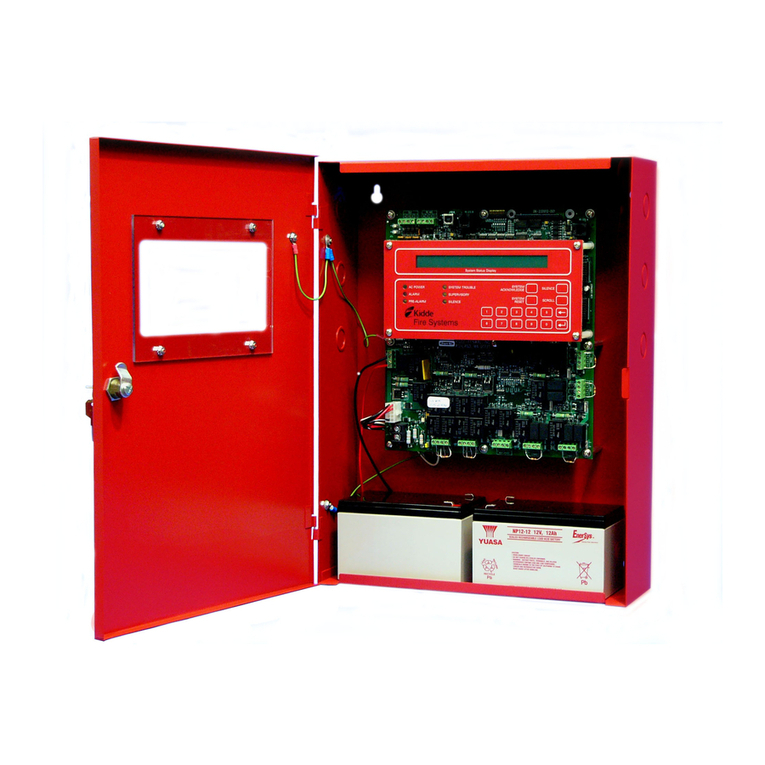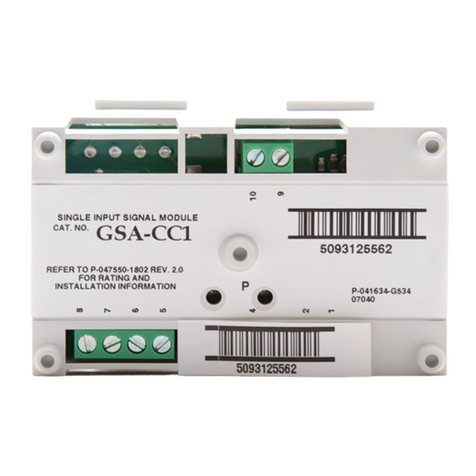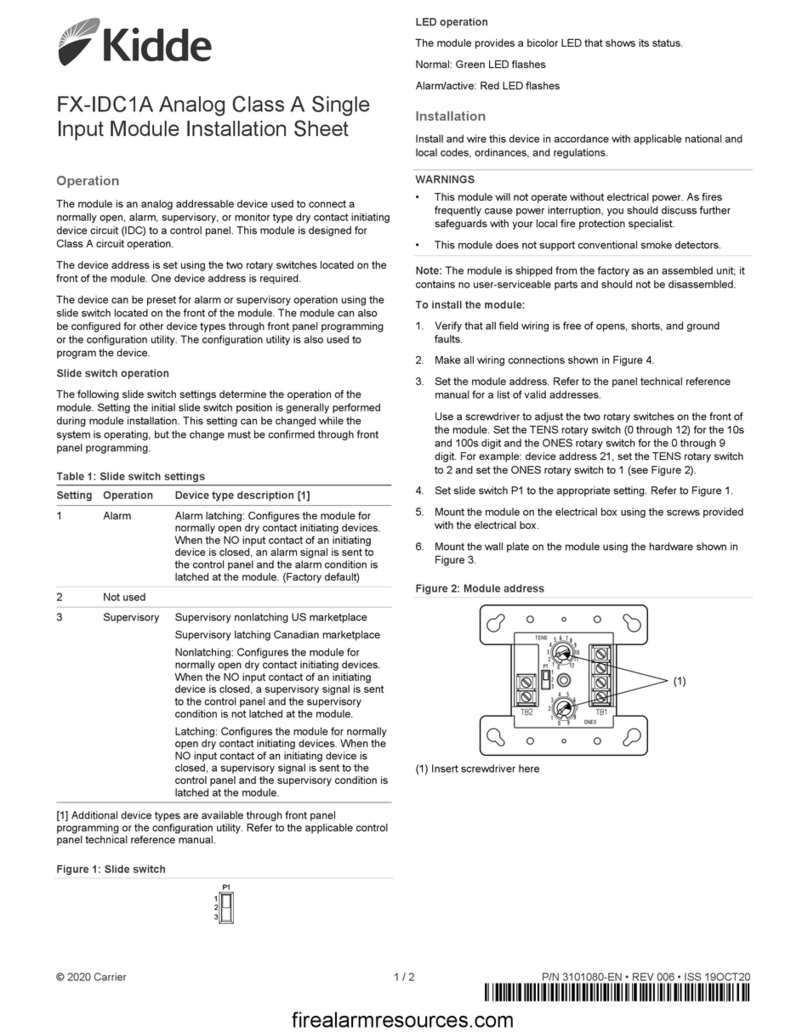
P/N 06-236716-001 iii August 2007
SAFETY SUMMARY
This entire manual must be read and understood before installation.
Installation PrecautionsAdherence to the following will aid in problem-free installation with long-
term reliability:
This system meets FM and ANSI/UL 864 requirements for operation at 32° to 120°F (0 to 49°C) and at a
relative humidity of 93% (non-condensing) @ 90°F (32.2°C). However, the useful life of the system’s
standby batteries and the electronic components may be adversely effected by continuous operation at
these environmental limits. Therefore, it is recommended that this system and its peripherals be installed
in an environment with a nominal room temperature of 60-80°F.
Like all solid state electronic devices, this system may operate erratically or can be damaged when
subjected to lightning induced transients. Although no system is completely immune from lightning
transients and interference, proper grounding will reduce susceptibility. The use of overhead or outside
aerial wiring is not recommended due to the increased susceptibility to nearby lightning strikes.
Consult with the Technical Support Department if any problems are anticipated or encountered.
Do not install electronic assemblies prior to mounting and attaching conduit for field wiring to the enclosure.
Before making modifications, verify that they will not interfere with battery and printed circuit board
locations. Do not overtighten screw terminals. Overtightening may damage threads, resulting in reduced
terminal contact pressure and difficulty with screw terminal removal.
This system contains static-sensitive components. Always ground yourself with a proper wrist strap before
handling any circuits so that static charges are removed from the body. Use static suppressive packaging
to protect electronic assemblies removed from the control unit.
Follow the instructions in this manual. These instructions must be followed to avoid damage to the control
unit and associated equipment. System operation and reliability depend upon proper installation.
Fire Alarm System Limitations While installing a fire alarm system may make lower insurance
rates possible, it is not a substitute for fire insurance!
An automatic fire alarm system – typically made up of smoke detectors, heat detectors, manual pull stations,
notification appliances, and a fire alarm control unit with remote-notification capability – can provide early warning
of a developing fire. Such a system, however, does not assure protection against property damage or loss of life
resulting from a fire.
Any fire alarm system may fail for a variety of reasons:
Smoke detectors may not sense fire where smoke cannot reach the detectors such as in chimneys, in walls,
on roofs, or on the other side of closed doors. Smoke detectors on one level also may not sense a fire on
WARNING
Several different sources of power can be connected to this fire alarm control unit.
Disconnect all sources of power before servicing. Control unit and associated
equipment may be damaged by servicing while the unit is energized. Do not
attempt to install, service, or operate this control unit until this manual is read
and understood.
CAUTION
System Re-acceptance Test after Re-Programming: To ensure proper system operation, this
system must be retested in accordance with NFPA 72 Chapter 10 after any
programming change. Re-acceptance testing is also required after any addition or
deletion of system components, and after any modification, repair or adjustment to
system hardware or wiring.
All components, circuits and system operations known to be affected by a change must
be 100% tested. In addition, to ensure that other operations are not inadvertently
affected, at least 10% of initiating devices that are not directly affected by the change,
up to a maximum of 50 devices, must also be tested and proper system operation
verified.

